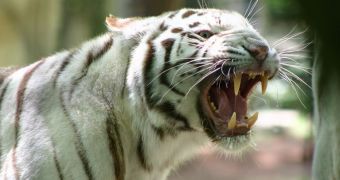Carnivores are usually at the top of the food chain in the world's ecosystems, but counting them can be difficult at times. Censuses need to be carried out nonetheless, in order for conservation experts to be able to draw meaningful conclusions about the health of particular species. This is important in the case of animals such as tigers, lions, cheetahs and so on, of which only limited numbers now survive. A group of investigators from Finland announces that it may have just developed a new method for keeping track of population health, which would make counting large carnivores a lot easier.
The scientists are based at the Aalto University School of Science and Technology, and they devised the technique in cooperation with researchers from the Finnish Game and Fisheries Research Institute. The computational approach has the potential to make surveying various species cheaper and faster. This will potentially allow scientists to run more surveys, and thus get a better picture of the number variations each species records over each year, or over decades, AlphaGalileo reports.
The model was designed specifically to keep track of carnivores such as lynxes, bears and wolves. It works by taking both direct and indirect approaches to counting. It relies heavily on the sighting material collected by contact persons in charge of actually going into the woods and looking for the animals. These data are then correlated with various traits related to the sighting and the animal itself, such as movement, territory, gender, number of cubs, size of pack, and so on. Animals that cannot be neatly classified into a pack or group are incorporated in one nonetheless by using probabilities. A project using the new method will last for about two years, and will receive funds from the Finnish Ministry of Agriculture and Forestry.
The technique will also be made efficient by a computer software that is to be developed over the course of the project. The Tassu database will be used as a reference point. This tool was created by researchers last year and works in a relatively simple manner. The people who are in charge of seeing the animals access it whenever they experience an encounter, and list the details there. Experts from the Aalto University's Center of Excellence in Computational Complex Systems Research say that both the method and the software should be fully functional by 2012.

 14 DAY TRIAL //
14 DAY TRIAL //